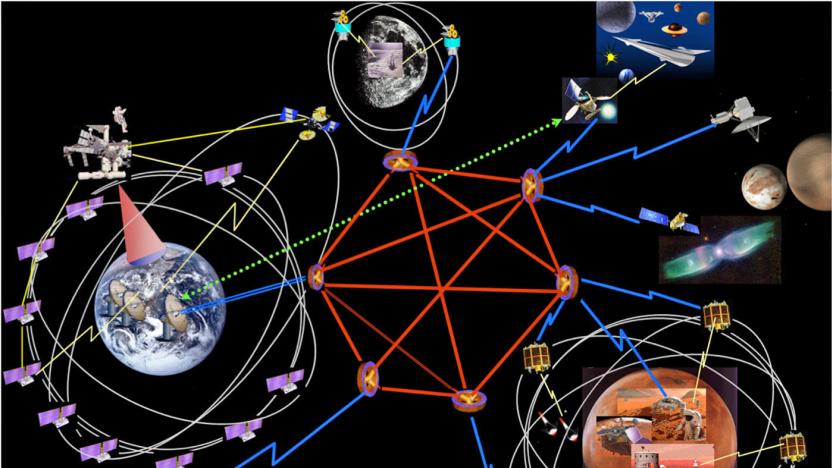dtn
Latest

NASA debuts new internet technology aboard the ISS
The ISS has a new technology on board that can transmit data from space much faster than what NASA uses today. See, the internet as we know it here on Earth doesn't work as well for spacecraft millions of miles away. It requires all nodes or connection points on a network -- in space, these are satellites -- to be active at the same time to send information back to the ground team. Since that's not always possible due to the various elements that can block a connection, such as planets, other spacecraft, radiation, and so on and so forth, it takes a long time for data to make it back to Earth. In the worst cases, some data gets lost along the way. This new tech called Delay/Disruption Tolerant Networking (DTN) gets rid of those problems.

ESA, NASA test interplanetary internet by remote controlling a Lego robot from the ISS
NASA (and the ESA) have long been working on a multi-planet internet that can link up spaceships, probes and rovers, but they've at last brought the experimentation from the broad scale to smaller dimensions. Lego bricks, to be exact. International Space Station expedition lead Sunita Williams recently steered a Lego Mindstorms robot at an ESA facility in Darmstadt while she orbited overhead, proving that future space explorers could directly control a vehicle on a planetary surface while staying out of harm's way. As in the past, the key to the latest dry run was a Disruption-Tolerant Networking (DTN) system; the focus was more on reliably getting packets through to the brick-based vehicle than on pure speed. As tame as that Earth-bound test drive might sound relative to an in-the-field use on a less familiar world, it demonstrates that the DTN approach can work when it really counts. We just wouldn't hold our breath for any Martian RC car races.

NASA's interplanetary Internet tests a success, Vint Cerf triumphs again
NASA is reporting the first successful tests of its Deep Space Network modeled after Earth's own Internet. Instead of using TCP/IP, however, the interplanetary communication network relies upon DTN (Disruption-Tolerant Networking) co-developed by none other than Google's Vinton Cerf. As such, NASA's network does not assume a continuous end-to-end connection -- if a link is lost due to solar storms or a planetary eclipse, the communication node will store the information until the connection is re-established. So, what's the big deal you rightly ask, after all, we've been (purposely) transmitting data to and from space for a half-century. As Leigh Torgerson, manager of NASA's DTN Experiment Operations Center explains it:"In space today, an operations team must manually schedule each link and generate all the commands to specify which data to send, when to send it, and where to send it. With standardized DTN, this can all be done automatically." Testing of the Deep Space Network began in October with twice-weekly communications between NASA's Epoxi spacecraft (on a mission to rendezvous with Comet Hartley 2) and nine ground-based nodes meant to simulate Mars landers, orbiters, and operation centers. The International Space Station is scheduled to join the testing next summer. Although the nature of the data transmitted wasn't specified, we can only presume that it was laced with Google ads for Mr. Lee's Greater Hong Kong.

